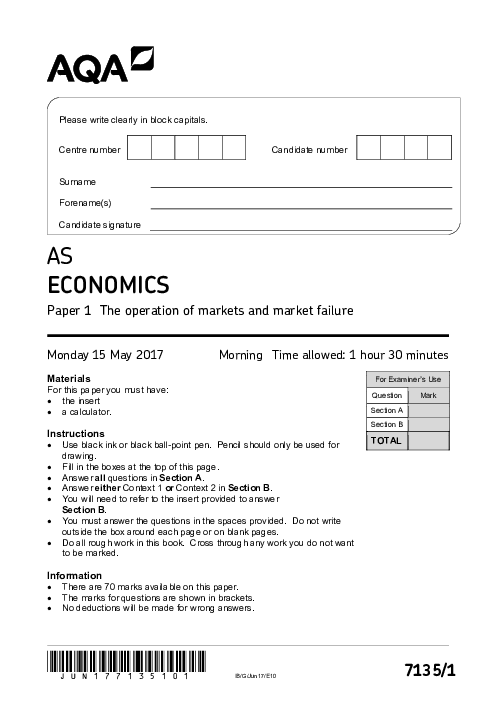Economics 7135/1 June 2017
omer uner
The exam explores microeconomic principles, market structures, and resource allocation efficiency. Topics include externalities, production possibility frontiers, income elasticity, and the impact of government subsidies. Analytical tasks address equilibrium adjustments, economies of scale, and the effectiveness of monopolistic competition. Section B evaluates real-world applications, such as supermarket industry changes and gambling’s societal effects, focusing on market concentration, external costs, and regulatory impacts. Quantitative reasoning tasks include calculating elasticity, concentration ratios, and equilibrium price changes. The exam emphasizes evaluating government interventions, market failures, and consumer welfare, integrating theoretical and practical economic concepts.
See More Paper 1 a year ago
Economics (7135) Subject directory
All resources in one place
Related Past Papers
Related Tutorials
Crash report

